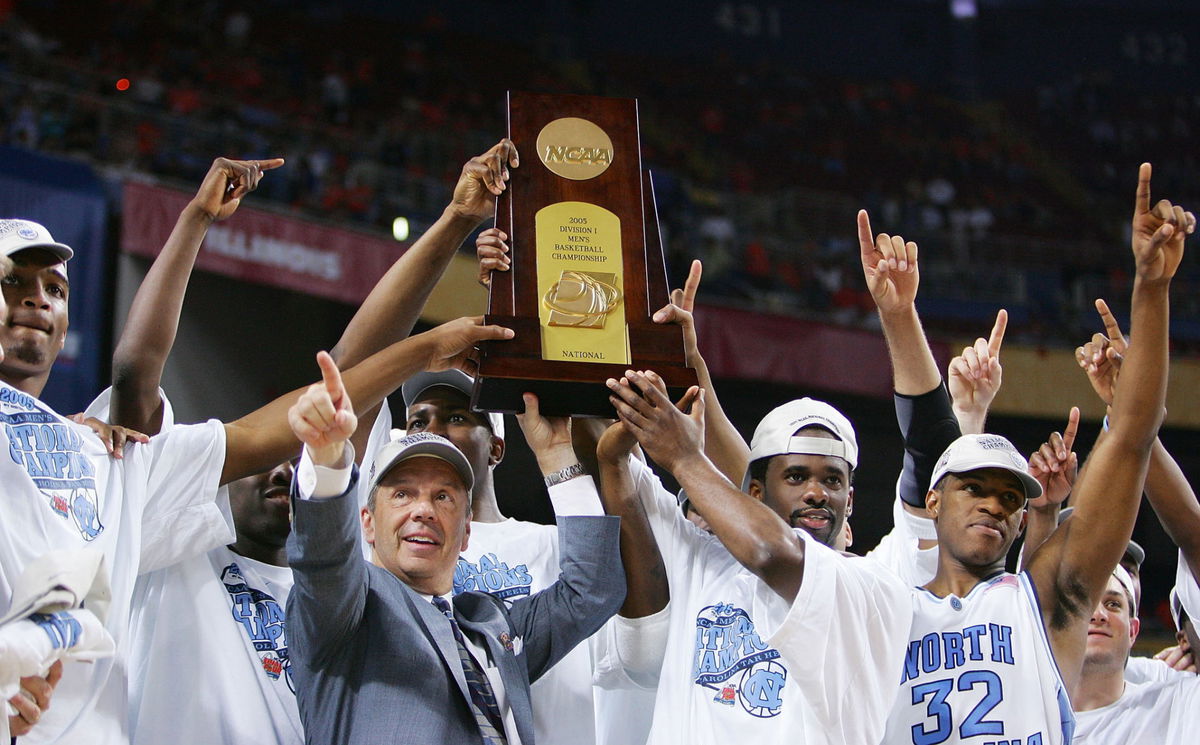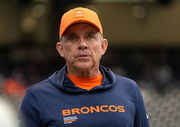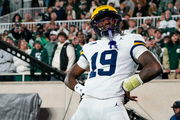

If an erstwhile college baller is to be believed, then NBA stars will simply pale in comparison with NCAA gunners when it comes to training. Despite being drafted in the NBA every year, many of these young stars return to their college teams to play in their senior season. They underline a big difference in the training regime of two leagues. One of them is the ex-NCAA Champion and UNC legend Tyler Hansbrough.
Watch What’s Trending Now!
Tyler was the star of the North Carolina Tar Heels and was the first player in the ACC’s history to be named both first-team All-ACC (4 times) and first-team All-American (4 times). Remembering his early college days, he talks about coach Roy Williams’ unique training methods.
ADVERTISEMENT
Tyler Hansbrough talks about Coach Williams’ training methods
UNC legend Tyler Hansbrough lately joined the conversation with the ex-NBA star Theo Pinson. Discussing Tyler’s early years at UNC, Theo asked him, “What was your welcome to college moment?” Remembering those days, Tyler said, “Conditioning test, the 12 33s. That’s unlike anything you ever experienced. It had to be the conditioning test I tell you anybody’s played for Coach Williams and it’s gone through that conditioning test I don’t think there’s any other school or program that um has a test that is that difficult.”
Elaborating on how the conditioning test provides a stellar physical transformation, he added, “I think anybody who’s done the 12 33s and has been in that type of shape has the ability to uh you know go to a lot of different places, and uh their conditioning test just was never the same. I think that’s uh yeah it it’s hard to describe but the conditioning test at UNC is a beast.”
Top Stories
LIV Golf Braces for Another Possible Exit in Wake of Brooks Koepka Departure

Sean Payton Announces Retirement Plans as Broncos HC Demands Improvement From Bo Nix & Co. Before Playoffs

Greg Biffle’s $4M Prized Possession Goes Up for Sale After Tragic Crash, Leaving NASCAR Fans Heartbroken

Biff Poggi All But Confirms Bryce Underwood’s Michigan Future After Announcing His Own Departure

‘Fighting for His Life’: ESPN Confirms Kirk Herbstreit’s Silent Struggles at College GameDay

Rory McIlroy Makes Feelings Clear on Bryson DeChambeau’s PGA Tour Return: ‘Have Lost…’

ADVERTISEMENT
ADVERTISEMENT
Continuing the discussion, Theo said, “I mean let’s just be honest, I still was in the best shape I have ever been in my life, like the fact that I was able to do it and it was, I would say for me, I’ll tell people this all the time every team hangs with us in the first half but you can’t mess with us in the second half because we’re just in that much better shape than you. We’re going to play at our pace all game long and you can do nothing with us. It’s crazy it’s crazy.”
Read More: Roy Williams Retirement: Five of His Greatest Moments With the North Carolina Tar Heels
Evidently, Coach Williams has received a lot of criticism for not changing his methods with the developing environment in college basketball. However, the transformation provided through his training methods can easily pull down the NBA’s physique.
ADVERTISEMENT
Why Williams’ methods will be ineffective in the NBA
The first one is the NCAA’s one-and-done setup. Evidently, talented players in their high school are forced to go to college, however, most of them drop out after one season only. As a result, this hurts the continuity and performance of top teams that not only wish to develop talent but also recruit the best from each high school class. Notably, player development and team chemistry play crucial roles in a team’s long-term success in the NBA. Coach Williams spent years navigating through this issue, as the lack of continuity can pose a bigger challenge while playing in the big league.
ADVERTISEMENT

Secondly, there is a huge difference in playing style in college from the NBA. The latter is more of an isolation-heavy game with a requirement for players to create their own shots. However, the former employs more set plays and a team-oriented game. Moreover, talking about the ‘player ego’, the NBA gets the most points here as players have more power in the NBA, which can lead to clashes with their coach. However, coaches in college basketball have more authority over their players which helps in an easier navigation through their emotions.
ADVERTISEMENT
Watch This Story: Proud Girlfriend Angel Reese Celebrates Camron Fletcher Victory in Front of 26 Million People
In comparison to college basketball, the length of a season is longer in the NBA (playoffs included). This requires the team to make adjustments in player management and strategies.
ADVERTISEMENT
ADVERTISEMENT
ADVERTISEMENT

